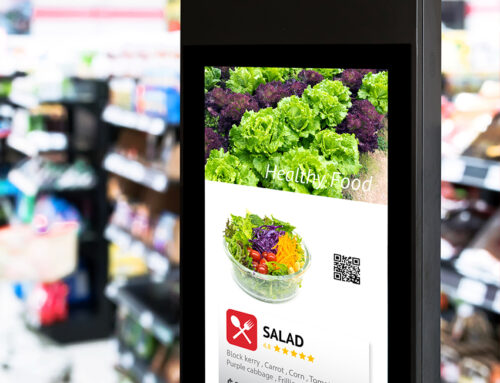Disruptive Advertising
When you‘re marketing a business or brand, you need to make it stand out and be memorable to your potential customers. Advertising is a vital tool for businesses to use in order to promote their products or services for advertising purposes. It is crucial to align advertising efforts with business goals to ensure that the marketing initiatives drive success and achieve measurable results. Businesses can use various types of ads to reach their target audience. If you’re struggling to find success with conventional forms of marketing or if your target audience just isn’t responding to your marketing endeavors the way you’d hoped then you’re looking for a robust marketing strategy that includes disruptive advertising.
What is Disruptive Advertising? Understanding the Disruptive Difference
Disruptive advertising can be a little difficult to define. To a degree, disruptive advertising is a form of advertising that is effective due to its unexpected content. The well-developed Advertising Techniques will determine the success of the company. It’s a great way to really grab a viewer’s attention and get them interested in your product or brand. Many forms of disruptive advertising end up going viral simply because the fact that it is unexpected makes it so entertaining and eye-catching. Better ads, supported by the Coalition for Better Ads, enhance user experiences by promoting ad formats that engage users rather than disrupt their experience.
Unfortunately, too many businesses use disruptive advertising incorrectly. For many brands, this form of advertising is used in unexpected ways as a one-off experiment to grab attention temporarily or to go viral on social media, often leading to inadvertent clicks. This can certainly work in the short term, but its impact is greater if disruptive advertising is used as part of your ongoing marketing campaigns.
Examples of Disruptive Advertising: Interstitial Ads
One of the biggest examples of disruptive advertising as part of an ongoing marketing plan would be the soap company, Dove. Through the past few decades, Dove has utilized older plus-sized women in their video advertisements. This was considered revolutionary and disruptive, as similar companies exclusively used celebrities or models in their ads. The brand has continued to use disruptive marketing in their video commercials. It is important to note that apps should not require users to submit personal information or click on ads before being able to fully use the app, ensuring user consent and minimizing obtrusiveness.
The “Oreo Eclipse” campaign is one example of a disruptive ad that has become quite well-known in food advertisement examples. The advertisement featured a massive Oreo cookie that gradually covered the sun, creating a visually appealing and memorable display. The advertisement was unexpected, and it sparked a lot of debate on social media.
Another excellent example of disruptive advertising would be an ad campaign from the outdoor and camping brand REI back in 2015. Anticipating Black Friday, many brands struggled to create advertisements that could pique the interest of consumers and make themselves stand out from competitors. REI, on the other hand, did something very different. Rather than advertise any Black Friday deals they had going on, the company launched an ad campaign encouraging consumers to stop shopping on Black Friday and go camping instead. This campaign was very successful and managed to not only surprise shoppers but make an emotional connection with them.
Just as well, car company Volvo decided to take their Superbowl advertising slot very seriously back in 2015. The company paid for a simple thirty-second commercial. In this commercial, the brand tells viewers to tweet with a specific hashtag in order to put in an entry to win a new Volvo vehicle. This was brilliant disruptive advertising, as each time viewers saw another car commercial, they would think of Volvo instead of the other car brand. Some agencies position themselves as the ‘last digital marketing agency’ their clients will ever need by using such innovative disruptive advertising strategies.
Benefits of Disruptive Advertising
Disruptive advertising is a game-changer in the digital marketing landscape. By leveraging innovative strategies and techniques, businesses can reap numerous benefits that drive growth, engagement, and revenue. Here are some of the key advantages of disruptive advertising:
- Increased Brand Awareness: In a world saturated with advertisements, disruptive advertising helps businesses cut through the noise and grab the attention of their target audience. By using bold, eye-catching ads, companies can significantly boost brand recognition and establish themselves as industry leaders.
- Improved Engagement: Disruptive ads are designed to be interactive and engaging, encouraging users to participate and share their experiences with others. This leads to increased social media buzz, word-of-mouth marketing, and ultimately, more conversions. For instance, full screen interstitial ads that appear during an app’s loading screen can captivate users and prompt them to take action.
- Enhanced Customer Experience: By providing users with relevant, personalized ads, businesses can create a more enjoyable and seamless customer experience. This builds trust, loyalty, and advocacy, driving long-term growth and retention. Imagine an ad that not only entertains but also offers value, making the viewer feel understood and appreciated.
- Better ROI: One of the standout benefits of disruptive advertising is its measurability. Businesses can track the effectiveness of their campaigns and make data-driven decisions to optimize their marketing budgets. This ensures that every dollar spent is working towards maximizing ROI.
- Competitive Advantage: In a crowded market, disruptive advertising helps businesses stand out from the competition. By embracing innovative strategies and technologies, companies can differentiate themselves and establish a unique market position. This disruptive difference can be the key to capturing market share and staying ahead of competitors.
- Increased Conversions: Disruptive ads are designed to drive action, whether it’s to make a purchase, sign up for a newsletter, or download an app. By using persuasive, attention-grabbing ads, businesses can increase conversions and achieve their marketing goals. For example, a well-placed interstitial ad on Google Play can prompt users to download an app they might not have considered otherwise.
- Improved SEO: Disruptive advertising can also have a positive impact on SEO. By creating high-quality, engaging content, businesses can improve their search engine rankings, drive more organic traffic, and increase their online visibility. This is particularly true when businesses create SEO content that resonates with their audience and encourages sharing.
- Enhanced Data Collection: Disruptive advertising provides businesses with valuable insights into user behavior, preferences, and demographics. This data can be used to refine marketing strategies, improve targeting, and optimize ad performance. For instance, understanding which device functions users interact with most can help tailor future ads for better results.
- Increased Brand Loyalty: By creating memorable, impactful ads, businesses can build strong emotional connections with their audience. This leads to increased brand loyalty, advocacy, and ultimately, long-term growth and success. A well-executed disruptive ad can turn casual viewers into passionate brand advocates.
By embracing disruptive advertising, businesses can unlock these benefits and achieve their marketing goals. Whether it’s increasing brand awareness, driving engagement, or improving ROI, disruptive advertising is a powerful tool that can help companies succeed in today’s fast-paced digital landscape.
Tips and Tricks for Disruptive Advertising as a Marketing Strategy
There are many different ways to take advantage of disruptive advertising:
Think outside of the box. This is vital when coming up with a disruptive advertising campaign. In order for it to be disruptive, your ad will need to take what people are expecting and completely flip it around.
Understand that not every situation calls for this technique. Disruptive advertising can be an excellent technique when your brand is struggling to shine in a sea of competitors. However, disruptive advertising may not always be the best solution. Consider other marketing vs advertising techniques before diving into the disruptive technique.
Always understand your industry. Before you can create a great disruptive ad, you’ll have to understand what exactly you’re trying to disrupt. This form of advertising isn’t just about surprising viewers– it’s also about projecting a message that makes your brand different from your competitors and others in your industry.
You can use disruptive advertising in different forms. For example, they can be used in video ads, audio ads, or native ads. While analyzing native advertising examples results, we have seen high conversion for disruptive ads.
Get to know your customer. Obviously, this is a must-do for any form of marketing. However, a successful disruptive campaign is created when a brand’s professionals step into the shoes of their customers. Why would your customers appreciate disruptive advertising from your brand? What problems could they have with others in your industry? Take the time to use your analytics tools, but also take the time to really consider what pain points customers may experience universally with your industry.











